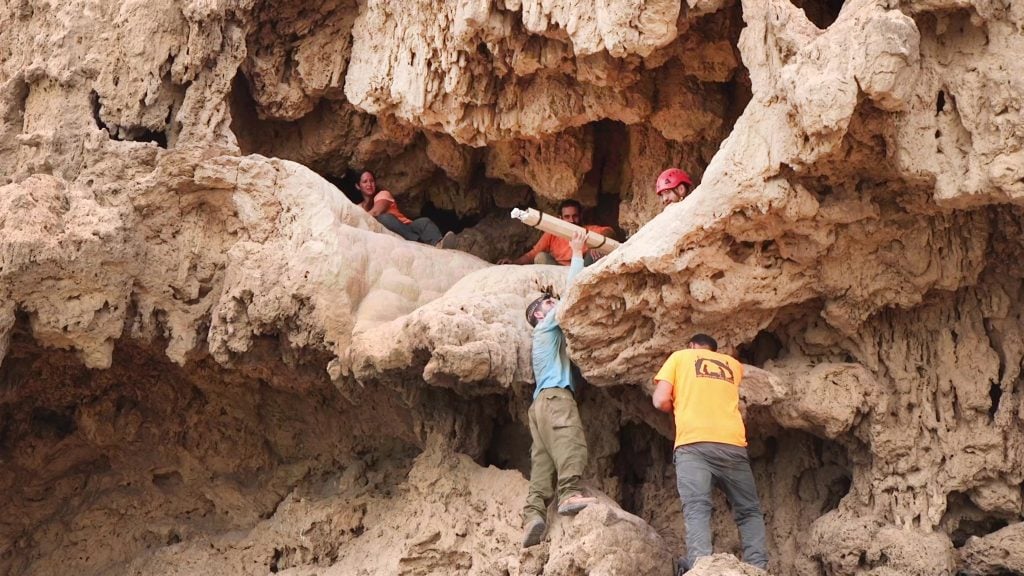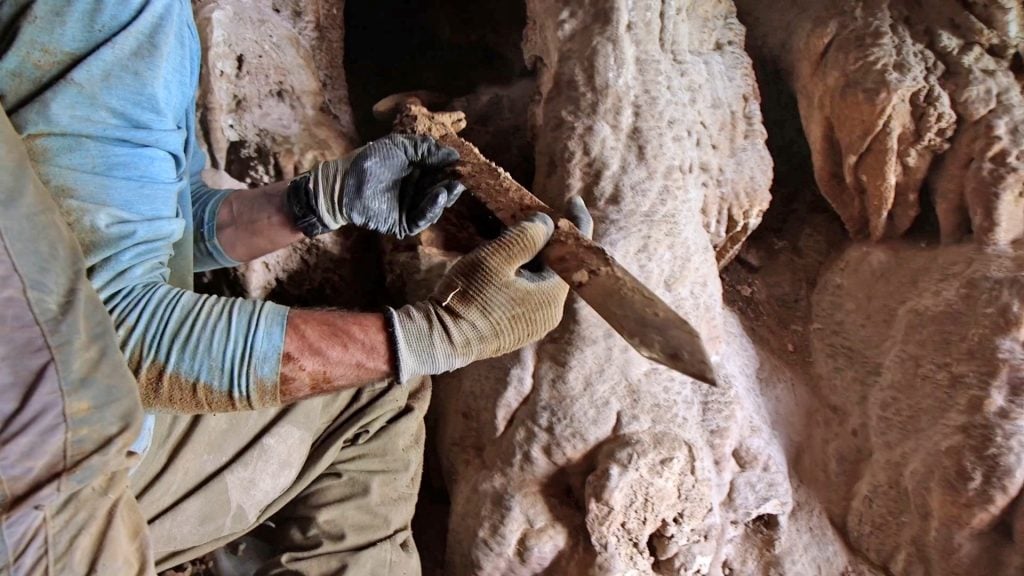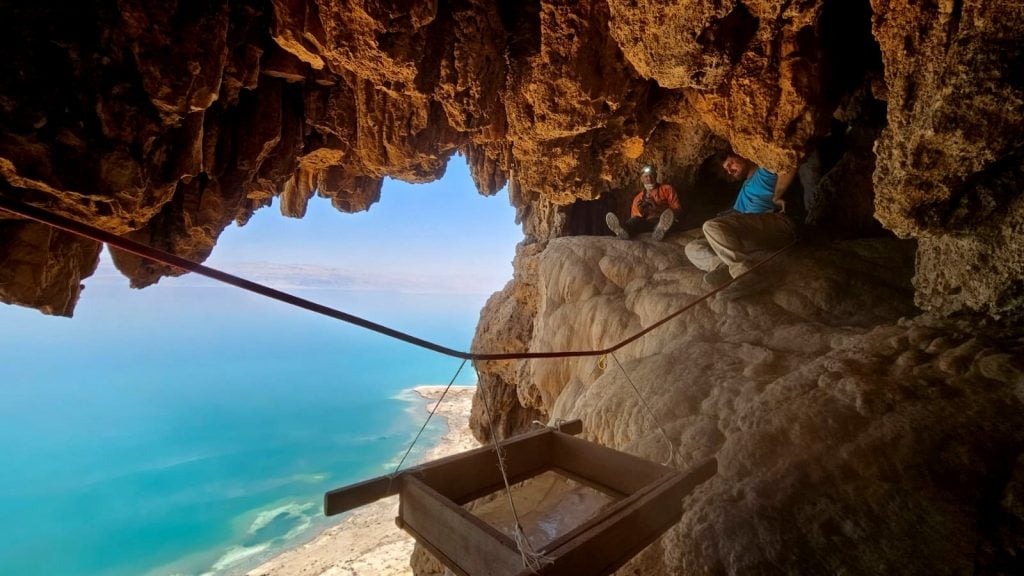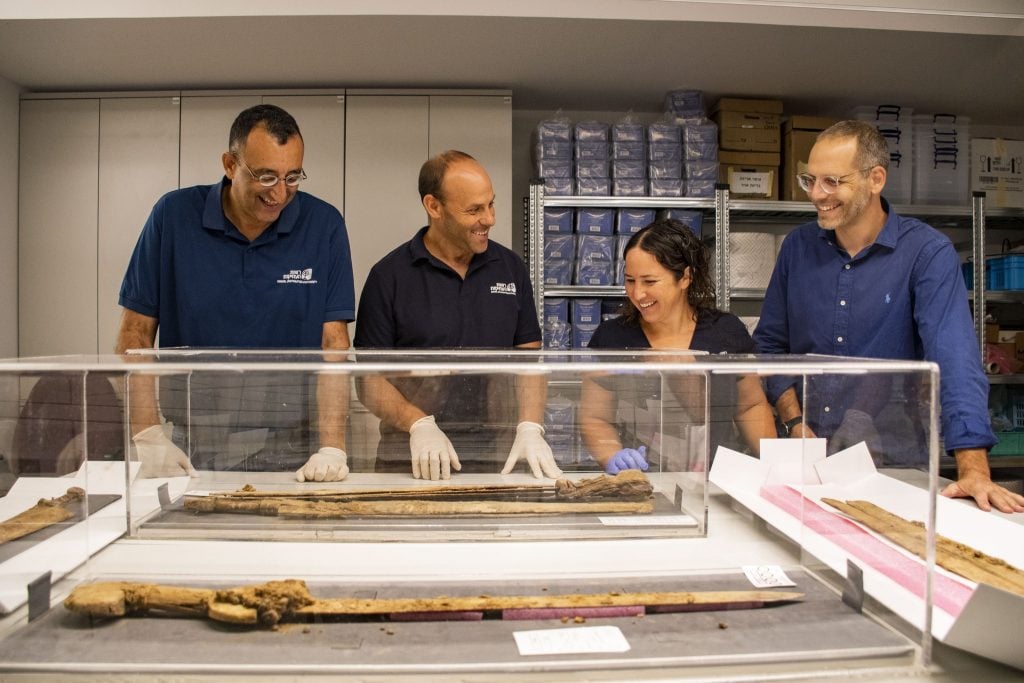Archaeology & History
Four ‘Excellently Preserved’ Ancient Roman Swords Have Been Found in the Judean Desert
Archaeologists found the rare weapons in a remote cave crevice.

Archaeologists found the rare weapons in a remote cave crevice.

Adam Schrader

Archaeologists have found four “excellently preserved” ancient Roman swords in a cave near the En Gedi Nature Reserve, which overlooks the Dead Sea in the Judean Desert, and is under the jurisdiction of the Israel Nature and Parks Authority.
The 1,900-year-old relics were found in a crevice in the cave, which has yielded discoveries as far back as the 1970s. According to the Israel Antiquities Authority, a “fragmentary ink inscription written in ancient Hebrew script characteristic of the First Temple period” was discovered on a stalactite some 50 years ago. When archaeologists visited the cave to photograph the inscription, they spotted a Roman pilum, a shafted weapon, in a deep and narrow crevice on the upper level of the cave, officials said.

Researchers are seen removing the swords from the crevice where they were hidden. Photo courtesy of Emil Aladjem, Israel Antiquities Authority

One of the swords is seen inside the cave. Photo courtesy of Israel Antiquities Authority

Archaeologists are seen at work in a remote cave near the En Gedi Nature Reserve. Photo courtesy of Hagay Hamer, Israel Antiquities Authority
The team also found pieces of worked wood in an adjacent niche that turned out to be parts of the swords’ scabbards, the Israel Antiquities Authority said. An additional four swords were found “in an almost inaccessible crevice” in a later visit.
“Three were found with the iron blade inside the wooden scabbards. Leather strips and wooden and metal finds belonging to the weapons were also found in the crevice. The swords had well-fashioned handles made of wood or metal,” officials said.
Those three swords were each about two feet long and identified as Roman spatha swords. The fourth one, with a blade about 18 inches long, was identified as a ring-pommel sword.
Judean rebels hid the weapons for reuse after seizing them from Roman soldiers, said Eitan Klein, one of the directors of the Judean Desert Survey Project.

Conservators Ilia Reznitzky and Lena Kupershmidt are seen handling the swords. Photo courtesy of Emil Aladjem, Israel Antiquities Authority

Researchers are seen with swords found in a cave in the Judean Desert. From right to left: Asaf Gayer, Oriya Amichay, Eitan Klein and Amir Ganor. Photo courtesy of Yoli Schwartz, Israel Antiquities Authority
The swords were transferred to climate-controlled laboratories for preservation and conservation and, after the swords were found, archaeologists excavated the cave in its entirety. They found more artifacts from ancient Rome and others dating to the Chalcolithic period that dates back approximately 6,000 years.
At the entrance to the cave, a Bar-Kokhba bronze coin from the time of the second century Bar Kokhba Revolt was found, “possibly pointing to the time when the cave served for concealing the weapons,” the researchers said.
“Finding a single sword is rare, so four? It’s a dream! We rubbed our eyes to believe it,” the researchers said.
“We are just beginning the research on the cave and the weapon cache discovered in it, aiming to try to find out who owned the swords, and where, when, and by whom they were manufactured,” Klein said.
“We will try to pinpoint the historical event that led to the caching of these weapons in the cave and determine whether it was at the time of the Bar Kokhba Revolt in 132–135 C.E.”
For now, the findings have been published in a preliminary article in the book New Studies in the Archaeology of the Judean Desert: Collected Papers.
More Trending Stories: